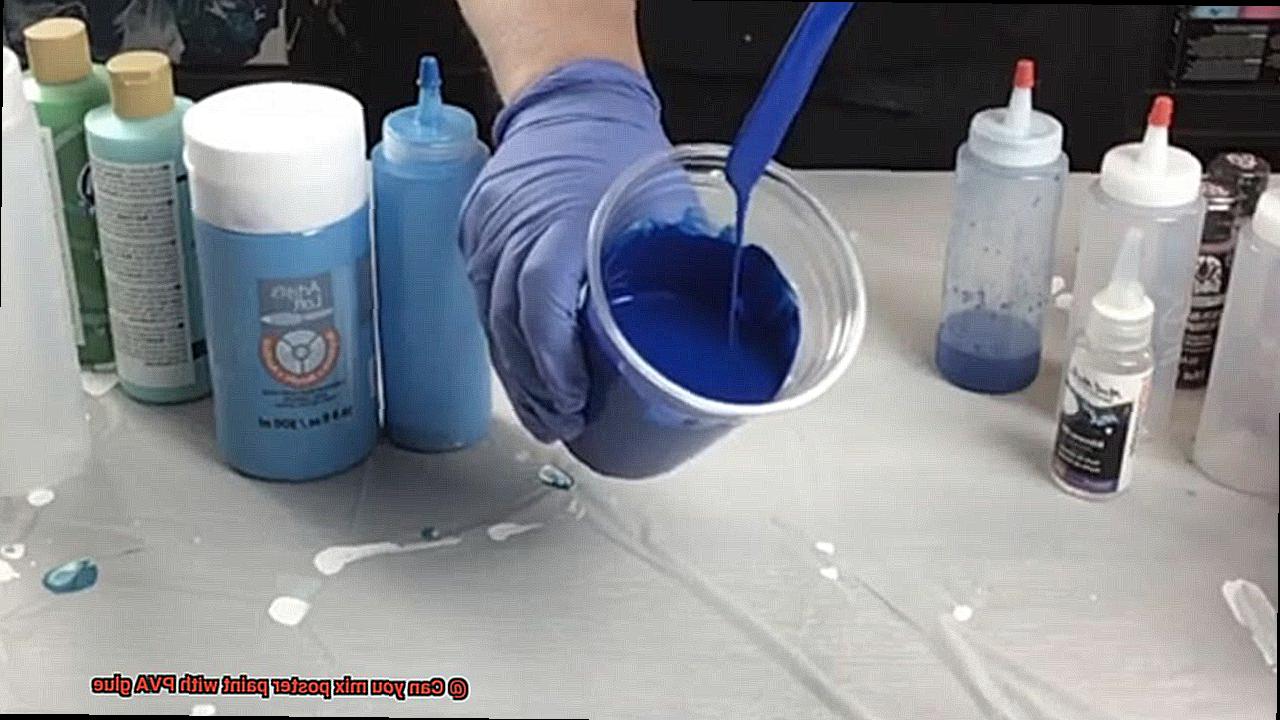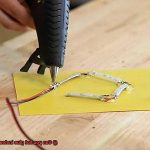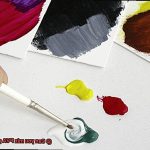Ready to dive into the mesmerizing world of art? We’ve got an intriguing concoction to share with you today. Mixing poster paint with PVA glue adds a delightful spin to your creative endeavors. In this blog post, we’ll explore the advantages and disadvantages of this unique mixture, as well as the possibilities it presents for various artistic projects.
Poster paints and PVA glue may seem unrelated, but they can work together harmoniously to create unique textures and effects. Whether you’re a budding artist or an experienced creator, this spontaneous combination opens doors to endless possibilities.
Advantages:
Contents
- 1 What is Poster Paint?
- 2 What is PVA Glue?
- 3 Factors to Consider When Mixing Poster Paint with PVA Glue
- 4 How to Mix Poster Paint and PVA Glue
- 5 Uses for Mixture of Poster Paint and PVA Glue
- 6 Other Alternatives to Using Mixture of Poster Paint and PVA Glue
- 7 Tips for Working with Mixture of Poster Paint and PVA Glue
- 8 Longevity of the Mixture
- 9 Conclusion
Mixing poster paint with PVA glue offers enhanced elasticity and durability. The PVA glue acts as a binder, making the resulting mixture able to withstand different surfaces. It’s perfect for various projects. This fusion also adds a glossy finish to artworks, enhancing their vibrancy and visual appeal.
Another advantage lies in texture experimentation. By adjusting the ratio of paint to glue, you can control the consistency of the mixture, creating interesting patterns and shapes. This versatile blend can be applied to canvases, paper, wood, ceramics – you name it. The artistic possibilities are endless.
Disadvantages:
While there are many advantages, it’s important to consider a few disadvantages too. Mixing poster paint with PVA glue can alter drying time, causing it to dry more slowly. This delay might not be ideal for artists seeking quick results or working on time-sensitive projects.
Additionally, the adhesive properties of PVA glue can affect color blending, resulting in a more opaque appearance. Artists aiming for transparent or translucent effects might want to try alternative techniques.
Unlocking Creativity:
Combining poster paint with PVA glue brings alchemy into your artistic process. From marbling techniques and mixed media collages to textured paintings and DIY crafts – this unusual mixture opens the door to endless creative experimentation.
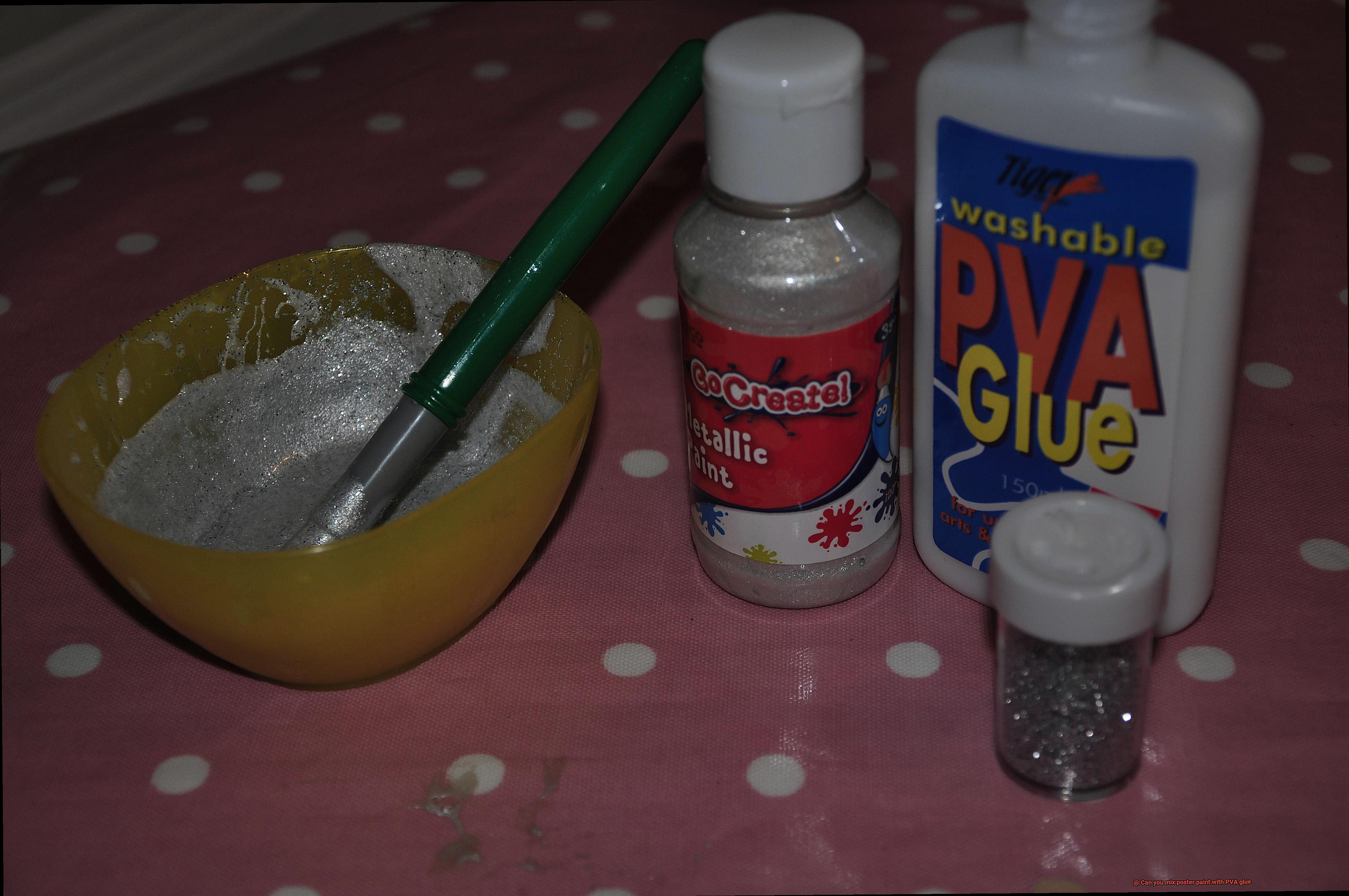
So, whether you want to add dimension to your abstract masterpiece or try your hand at mixed media art, mixing poster paint with PVA glue offers an exciting avenue for your creative projects. Stay tuned for our upcoming blog posts, where we’ll dive deeper into specific techniques and project ideas.
What is Poster Paint?
Poster paint, also known as tempera paint, is a dynamic and versatile water-based paint that has become a staple in arts and crafts projects, particularly among children. Here are some key points to understand about the captivating world of poster paint:
- Quick-drying marvel: Poster paint possesses the magical ability to dry rapidly, usually within minutes. This allows artists to work swiftly and avoid the dreaded smudging or smearing of their precious artwork.
- Vibrant hues that dazzle: Poster paint boasts an extensive range of colors, offering artists a vibrant and opaque finish. These bold and eye-catching hues make it the ideal choice for creating stunning artwork that pops off the page.
- Water-based wonders: Poster paint’s formula consists of a delightful mixture of pigment, binder, and water. Its water-based nature makes for effortless cleanup with just water alone. Gone are the days of wrestling with solvents required for cleaning brushes and palettes when working with oil-based paints. Poster paint embraces convenience and user-friendliness wholeheartedly.
- The binder behind the beauty: Poster paint often incorporates polyvinyl acetate (PVA) glue as its trusted binder. PVA glue possesses excellent adhesion properties, ensuring that poster paint adheres flawlessly to diverse surfaces such as paper, cardboard, and wood. Additionally, PVA glue contributes to the smooth texture and quick drying time that artists adore.
- Safe and washable wonder: Rest assured, poster paint is non-toxic, making it perfectly safe for use by children. It is also a dream come true for parents and educators alike as it is easily washable. Any spills or accidental mishaps can be swiftly remedied with a simple splash of water.
- An affordable masterpiece: Compared to other types of paints like acrylic or oil paints, poster paint is an economical option that won’t break the bank. It is widely available in art supply stores and online, making it accessible to artists of all budgets.
- Limitless possibilities: Poster paint is a chameleon, effortlessly adapting to various surfaces such as paper, cardboard, wood, and even fabric. It can be used for an array of art projects including traditional painting, mesmerizing drawings, captivating collages, and even finger painting. The possibilities are as endless as the artist’s imagination.
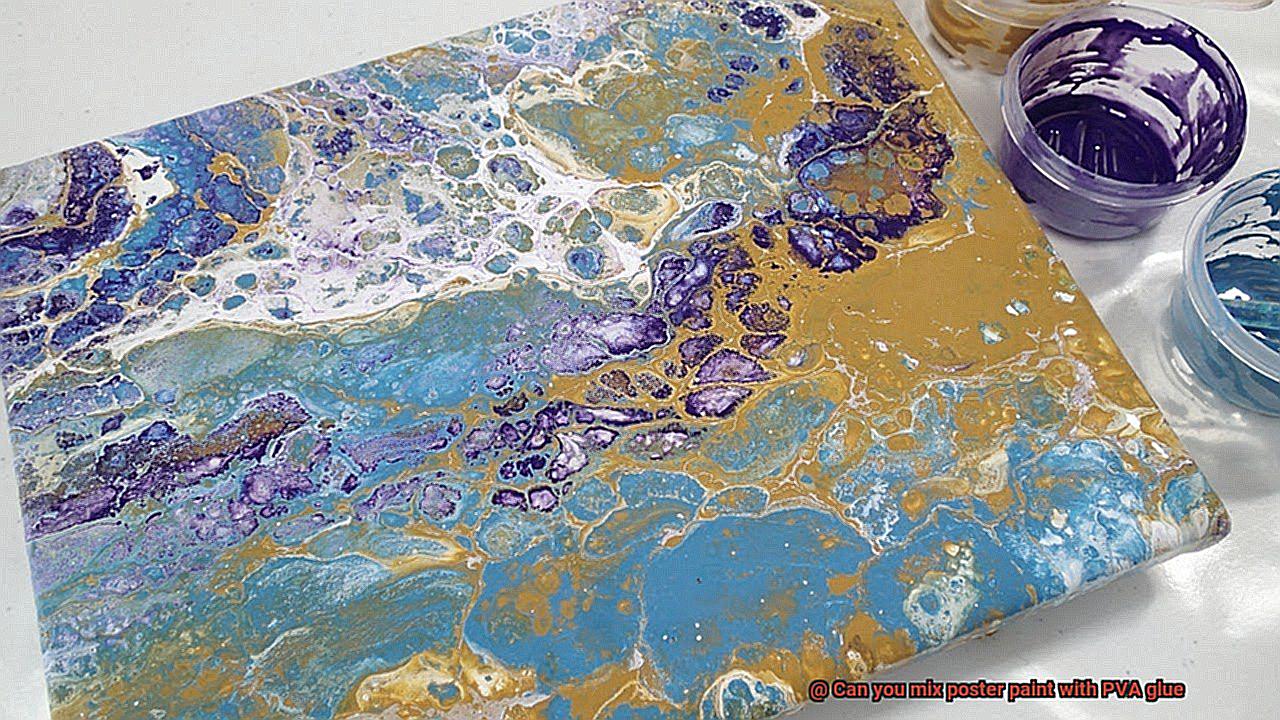
What is PVA Glue?
PVA glue, also known as polyvinyl acetate glue, is a versatile adhesive that finds its place in various applications. Whether you’re working on an arts and crafts project, engaged in woodworking, or even involved in construction, PVA glue has got you covered. It owes its adhesive properties to a synthetic polymer known as polyvinyl acetate.
One of the standout qualities of PVA glue is its water-solubility. This means that it can be easily diluted with water, making it suitable for a wide range of uses. When applied to a surface, the water in the glue evaporates, leaving behind a bond that is not only strong but also durable.
PVA glue comes in different forms, including liquid, gel, and even as a powder that can be mixed with water to create a paste. This versatility enables it to cater to the needs of various projects. Additionally, it’s worth noting that PVA glue dries clear, making it perfect for projects where aesthetics matter.
When it comes to bonding capabilities, PVA glue boasts impressive strength. It adheres exceptionally well to porous surfaces like wood, paper, fabric, and even certain plastics. This makes it a top choice among crafters and DIY enthusiasts alike.
Apart from its adhesive properties, PVA glue offers other advantages as well. Firstly, it is non-toxic and safe to use, making it ideal for children’s crafts. Secondly, its easy cleanup is another perk since it can be washed away with water while still wet.
Factors to Consider When Mixing Poster Paint with PVA Glue
If so, there are several important factors you should consider to ensure the best results. Let’s dive in and explore these factors in detail.
- Consistency: PVA glue has a thick and viscous texture, which can alter the consistency of both the glue and the paint when mixed together. To achieve a smooth and easy-to-apply mixture, start with small amounts of glue and gradually add it to the paint until you reach your desired consistency. This step will help you avoid any unexpected surprises and ensure that your mixture is just right.
- Adhesion: PVA glue is known for its strong adhesive properties, which can enhance the paint’s ability to stick to surfaces like paper or cardboard. However, if you’re working on a canvas or fabric that doesn’t require strong adhesion, be cautious not to add too much glue. Excessive glue can make the paint less flexible and prone to cracking. Consider the surface you’re working on and adjust the amount of glue accordingly.
- Drying Time: PVA glue takes longer to dry compared to poster paint. If you’re looking for a faster drying time, either use less PVA glue in the mixture or choose a quick-drying variant of poster paint. On the other hand, if you want to extend the drying time for blending or layering purposes, adding more PVA glue can be a suitable option. Consider your artistic needs and adjust the amount of glue accordingly.
- Color Intensity: Mixing PVA glue with pigmented poster paint can lighten or dilute the original colors because PVA glue is typically white. To maintain vibrant and intense colors in your artwork, use less PVA glue or consider using a transparent variant of the glue. Additionally, pay attention to the opacity of both materials, as mixing two opaque substances can result in a less transparent final product.
- Longevity: While PVA glue provides better adhesion and durability, it can also affect the long-term stability of your artwork. The addition of glue can make the paint less flexible, potentially leading to cracking or peeling over time. If you’re creating artwork intended to last, consider the permanence and archival qualities of both the poster paint and PVA glue. It’s important to strike a balance between adhesion and flexibility for optimal longevity.
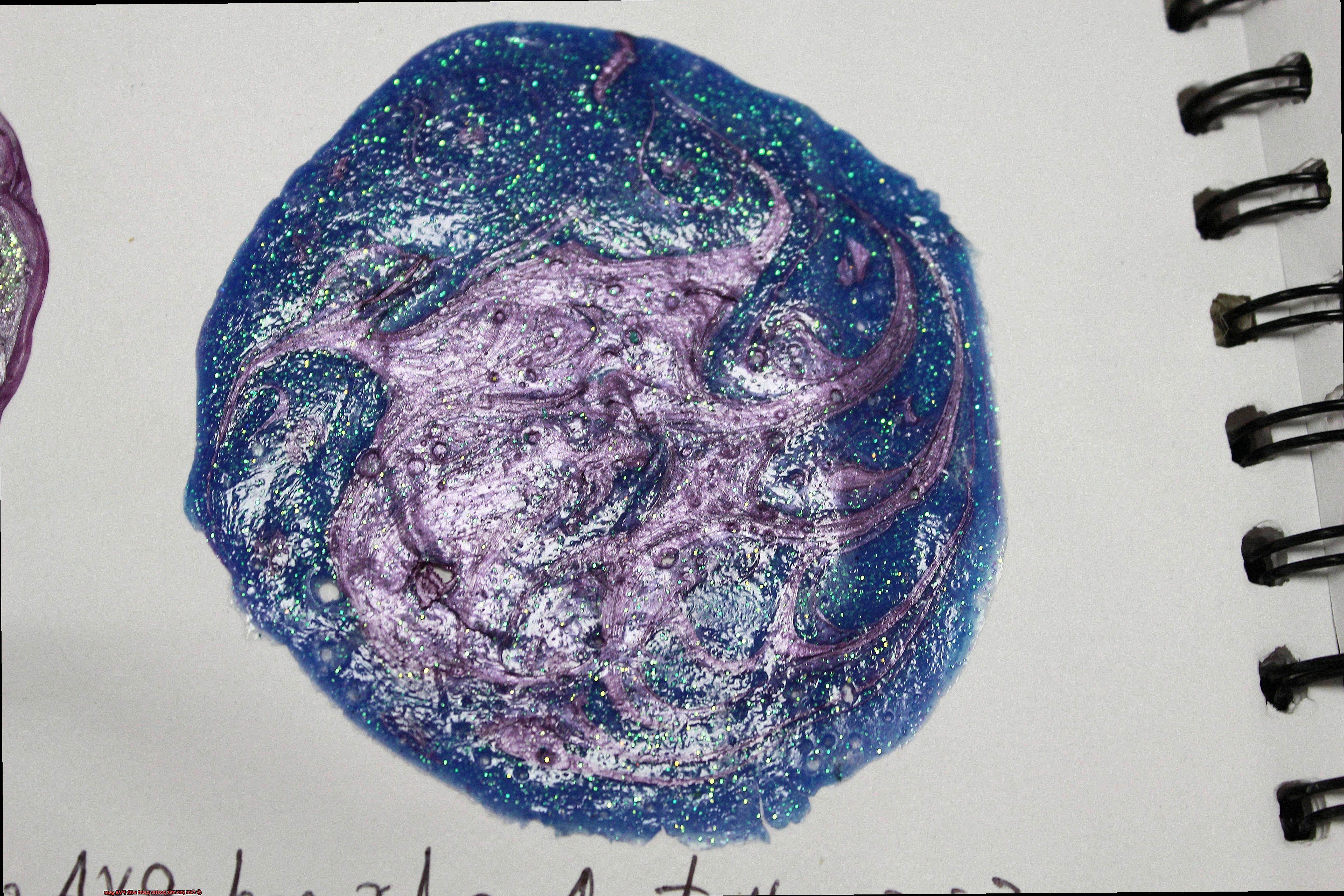
How to Mix Poster Paint and PVA Glue
To mix poster paint and PVA glue, start by preparing your workspace. Lay down newspaper or a protective covering to avoid spills or stains. This will ensure that your work area stays clean and free from any unwanted messes.
Next, squeeze out the desired amount of poster paint onto a mixing palette or container. Start with a smaller amount and add more as needed. It’s always better to have extra paint than to run out in the middle of your project.
Now it’s time to add a small amount of PVA glue to the mix. The ratio can vary, but start with a 1:1 ratio and adjust as necessary for a thicker consistency. The PVA glue acts as a binding agent, helping the paint adhere to surfaces and providing added durability.
Using a paintbrush or palette knife, thoroughly mix the poster paint and PVA glue together. Make sure to scrape the sides and bottom of the container to ensure everything is well incorporated. Mix until you achieve a smooth and consistent texture.
Experiment with different ratios and techniques to see what effects you can achieve with the mixture. Adding more glue can make it thicker and more adhesive, while adding more paint can give it a more opaque finish. Play around with different combinations to find what works best for your specific project.
Once you have mixed your desired consistency, you can start using the paint for your artwork. Apply it onto your chosen surface using brushes, sponges, or any other preferred painting tools. The addition of PVA glue can make the paint adhere better to various surfaces such as paper, cardboard, wood, and even canvas.
Lastly, allow sufficient drying time before adding additional layers or details to your artwork. The drying time may be slightly longer due to the addition of PVA glue. Be patient and ensure that the paint is completely dry before proceeding with any further work.
Uses for Mixture of Poster Paint and PVA Glue
Prepare to be captivated by the endless wonders that await you as you embark on a creative journey like no other.
Let’s begin with the ever-popular homemade slime, a delightful concoction that is sure to intrigue and entertain. By mixing equal parts of poster paint and PVA glue, along with a touch of borax or contact lens solution, you can create a mesmerizing and stretchy slime that will keep your hands blissfully occupied.
But wait, there’s more. If textured artwork is your passion, then this dynamic duo is your ultimate secret weapon. By blending poster paint and PVA glue together, you create a luscious paste-like substance that can be applied to canvas or any surface using a brush or palette knife. The result? Breathtaking patterns and designs that leap off the page and into your heart.
Feeling sculptural? Look no further than papier-mâché projects. Combine equal parts of poster paint and PVA glue with torn-up pieces of newspaper or tissue paper, add water to achieve the perfect consistency, and watch as the magic unfolds. Mold this enchanting mixture onto a wire frame or other form, and witness the birth of exquisite sculptures or masks that will leave you in awe.
For those who revel in the world of collages, this blend is a game-changer. The powerful adhesive properties created by mixing poster paint and PVA glue allow you to attach various materials like paper, fabric, or found objects to any surface. But fear not, dear artist, for this wondrous mixture dries clear, ensuring that your chosen materials shine through while remaining securely in place.
Last but certainly not least, let us explore the realm of decorative objects. Combining poster paint and PVA glue gives you a thicker consistency that is perfect for painting on surfaces such as wood or glass. Bid farewell to smudged and runny paint, for this magical mixture will keep your designs intact and oh-so-stylish.
Other Alternatives to Using Mixture of Poster Paint and PVA Glue
The combination of poster paint and PVA glue is indeed a popular choice for various crafts and art projects. However, there are several alternative options available that can be just as effective, if not more so, depending on your specific needs. Here are some alternatives to consider:
- Acrylic paint: Acrylic paint is a versatile medium that is widely available and can be used for a variety of artistic applications. It has a similar consistency to poster paint and dries quickly, adhering well to most surfaces. Unlike poster paint, acrylic paint already contains binding agents, so it does not require the addition of glue for adhesion.
- Watercolor paint: Watercolor paint is known for its transparent and fluid properties, creating beautiful washes of color. It comes in pans or tubes and can be easily activated with water. While watercolor paint may not have the same opacity as poster paint, it can be layered to achieve desired effects and is ideal for creating delicate and translucent artworks.
- Oil pastels or crayons: If you’re looking for a more textured finish, oil pastels or crayons are great alternatives. These tools provide vibrant color and can be easily blended or layered. Oil pastels have a buttery consistency that allows for smooth application, while crayons have a waxy texture that can create interesting textures when combined with other mediums.
- Craft glues or adhesives: If you need a strong adhesive quality, consider using specific craft glues or adhesives. These products are designed to bond specific materials together and can provide a more durable and long-lasting result compared to the mixture of poster paint and PVA glue. Examples include fabric glue, wood glue, or multi-purpose adhesives.
- Varnishes or sealers: If you want a glossy or matte finish on your artwork, varnishes or sealers are great options. These products are typically applied as a final layer to protect and enhance the artwork. Varnishes come in various formulations, including glossy, satin, and matte finishes, allowing you to choose the desired effect for your project.
Tips for Working with Mixture of Poster Paint and PVA Glue
- Start with Small Amounts: When working with a mixture of poster paint and PVA glue, it’s important to start with small amounts. This allows you to test the mixture and make any necessary adjustments before using it on a larger scale. Mix equal parts of poster paint and PVA glue in a plastic or glass container, using a palette knife or stir stick to thoroughly combine the two substances until smooth.
-
Consider the Consistency: Depending on your project, you may want to adjust the ratio of paint to glue to achieve the desired consistency. Adding more poster paint will result in a thicker mixture, while adding more PVA glue will create a thinner consistency. Experiment with different ratios to find the texture that works best for your needs.
- Allow for Extended Drying Time: PVA glue can slow down the drying process of the paint, so it’s important to allow extra time for your artwork to dry completely before handling or applying additional layers. Be patient and avoid rushing the process to ensure a smooth and even finish.
- Choose the Right Surface: Consider using a thicker paper or canvas that can withstand the adhesive properties of the PVA glue. The mixture may have different properties compared to using poster paint alone, so it’s important to select a surface that can handle the additional bonding properties of the glue.
- Add Gloss for a Polished Finish: If you want to achieve a glossy finish on your artwork, mix in a small amount of gloss medium or varnish with the poster paint and PVA glue mixture. This will give your artwork a shiny and polished appearance.
- Clean up Immediately: PVA glue can be challenging to remove once it dries, so it’s best to clean up any spills or messes immediately after working with the mixture. Use warm soapy water to clean your brushes and tools, ensuring that all excess glue is removed before it hardens.
Longevity of the Mixture
Creating a long-lasting concoction of poster paint and PVA glue involves considering several crucial factors that affect its longevity. The term “longevity” refers to the duration for which the mixture remains usable and retains its desired properties. Let’s delve into these factors, exploring how they can impact the lifespan of your paint and glue blend.
The quality of the materials utilized significantly contributes to determining the mixture’s longevity. Opting for high-quality poster paint and PVA glue ensures superior adhesion and durability, whereas cheaper or lower-quality alternatives may result in an unreliable concoction that deteriorates over time.
The proportions of paint to glue in your mixture play a vital role in its longevity. A higher ratio of glue to paint generally yields a more robust and enduring blend. However, excessive amounts of glue can affect color intensity and texture, necessitating finding the perfect balance for your desired outcome.
Proper storage conditions are essential for maintaining the mixture’s longevity. Storing it in a cool, dry place away from direct sunlight, heat, and humidity prevents premature deterioration, safeguarding its adhesive properties.
Consider the intended use of your mixture, as it can also impact its longevity. If you plan to employ it for crafts or projects requiring long-term adhesion, such as papier-mâché or collages, ensuring a well-mixed and balanced combination can extend its lifespan.
When mixing paint and glue, it is advisable to blend only small quantities at a time. This practice guarantees freshness while preventing wastage, leading to a more prolonged period of reliable quality.
dfiGId26kOM” >
Conclusion
Mixing poster paint with PVA glue is a fantastic way to add some extra pizzazz to your artwork. The combination of these two materials creates a unique texture and vibrant colors that will make your masterpiece stand out from the crowd.
Not only does the PVA glue act as a binder, ensuring that your paint adheres to the canvas or paper, but it also adds a glossy finish that gives your artwork a professional touch.

